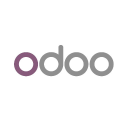How We Built A MillIon Dollar Ecommerce Platform [India]
Hello! Who are you, and what business did you start?
My name is Saurav Pathak, the Chief Product Officer of Bagisto.
Bagisto is an open-source e-commerce platform built on Laravel and offers more than just e-commerce. The platform also features great post-commerce solutions.
The user can build marketplaces, point-of-sale (PoS) solutions, progressive Web apps (PWA), and drop ship solutions using Bagisto.
The platform is highly scalable and flexible and can be customized by developers working on the Laravel framework. Any small, medium or enterprise merchant can easily use Bagisto to build its e-commerce platform.
Developers and freelancers can use Bagisto to develop their customized e-commerce solution and deliver it to their clients quickly.
In the last 4 years, we have generated revenue worth $1M with $350k ARR the past two years.
We currently have more than 70K downloads, about 5k GitHub stars, around 5000 community members worldwide, and more than 150 contributors who regularly contribute to Bagisto to enhance its features.

Download the report and join our email newsletter packed with business ideas and money-making opportunities, backed by real-life case studies.

Download the report and join our email newsletter packed with business ideas and money-making opportunities, backed by real-life case studies.

Download the report and join our email newsletter packed with business ideas and money-making opportunities, backed by real-life case studies.

Download the report and join our email newsletter packed with business ideas and money-making opportunities, backed by real-life case studies.

Download the report and join our email newsletter packed with business ideas and money-making opportunities, backed by real-life case studies.

Download the report and join our email newsletter packed with business ideas and money-making opportunities, backed by real-life case studies.

Download the report and join our email newsletter packed with business ideas and money-making opportunities, backed by real-life case studies.

Download the report and join our email newsletter packed with business ideas and money-making opportunities, backed by real-life case studies.
















